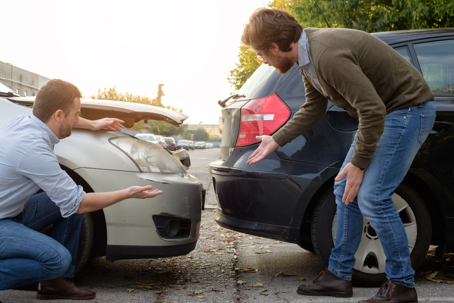Rear-end accidents are some of the most common types of accidents on the road. A rear-end accident occurs when a vehicle is hit from behind by another vehicle. Unfortunately, these accidents often result in serious injuries, both physical and emotional. If you have been involved in a rear-end accident, you probably have a lot of questions about what to do next. This post aims to answer some of the most frequently asked questions about rear-end accidents.
Common Injuries Associated with Rear-End Car Accidents
Rear-end accidents can result in a wide range of injuries, ranging from minor scrapes and bruises to more serious injuries such as whiplash, back injuries, and even traumatic brain injuries. It's important to seek medical attention immediately after an accident, even if you do not think you are injured, as some injuries may not appear until later.
Injuries frequently associated with rear-end car accidents include:
- Neck injuries
- Back injuries
- Head and facial injuries
- Chest injuries
- Arm and leg injuries
- Muscular injuries
- Abdominal injuries
Symptoms of Whiplash
One of the most common injuries associated with rear-end accidents is whiplash. Whiplash is a condition that occurs when the head is suddenly jerked backward or forward, causing the neck to move in an unnatural way. This sudden movement can cause damage to the muscles, ligaments, and other soft tissues in the neck, resulting in what's known as a whiplash injury. While many whiplash injuries can be treated with rest, ice, and pain medication, some may require more extensive medical attention, and it is critical to address a whiplash injury quickly.
Symptoms of whiplash include:
- Neck pain
- Stiffness
- Headaches
- Dizziness
- Reduced range of motion
Whiplash can be incredibly painful and limiting. And, if not treated, whiplash injuries can result in chronic pain that lasts for years.
Determining Who is at Fault in a Rear-End Accident
When determining who is at fault for a rear-end accident, the police and insurance companies often look at the series of events that led up to the collision as well as any relevant traffic laws or regulations. It is common that the driver of the rear-ending vehicle is found to be liable for the accident due to their failure to maintain a safe following distance and take proper evasive measures. This can include failing to brake in time or abruptly swerving out of their lane. Factors like weather conditions or road hazards may also affect liability determinations.
Should I Seek Compensation?
It is important to remember that these types of accidents can result in severe and long-term physical and emotional consequences that can have lasting effects. With this in mind, working with an experienced attorney can help you maximize your chances of recovering the compensation you need to restore the quality of life you enjoyed before the accident.
After being rear-ended, you may be able to recover compensation for the following:
- Medical expenses
- Lost wages
- Lost earning capacity
- Psychological trauma
- Diminished quality of life
Contact Your Attorney
If you or a loved one are injured in a rear-end car accident, please contact our experienced attorneys at Douglas, Leonard & Garvey, P.C. for guidance today.

